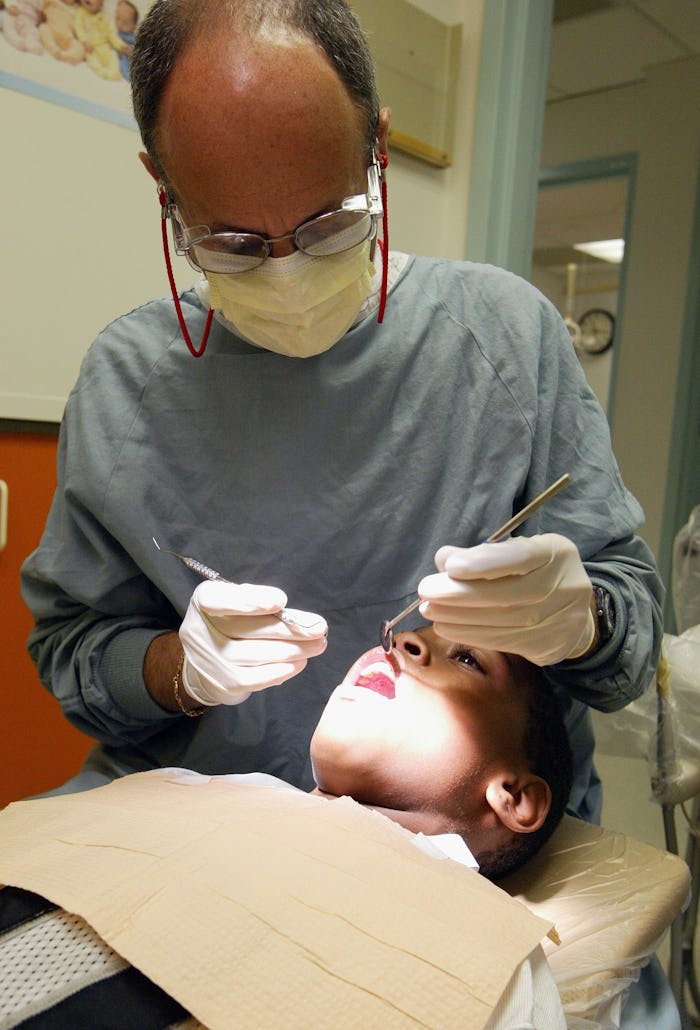Life

Here's Why Dental Sealants Should Be Part Of School Programs Across The Country
The Centers for Disease Control say that there's a cheap, easy, and effective way to prevent 80 percent of childhood cavities, but not enough kids are taking advantage of it, according to NBC News. Both the American Dental association and the CDC recommend dental sealants to prevent cavities, but only 43 percent of kids ages 6 to 11 have them. Currently, 20 percent of kids and teens are walking around with untreated dental decay that could have been easily avoided.
In a report published on Tuesday, CDC director Dr. Tom Frieden said, "Dental sealants can be an effective and inexpensive way to prevent cavities, yet only one in three low-income children currently receive them. School-based sealant programs are an effective way to get sealants to children." Unfortunately, a combination of red tape and a lack of funding have prevented widespread implementation of school-based programs. Children without sealants have almost three times as many cavities as those with sealants, and low-income kids are 20 percent less likely to have sealants than their peers. The CDC estimates that providing sealants to the 7 million low-income children who don’t currently have them could potentially save up to $300 million in future treatment costs.
Sealants are applied to the chewing surface of adult molars (back teeth) to prevent decay. Molars have pits and grooves that can trap food and bacteria and allow a cavity to form. Most cavities begin on the chewing surface. A sealant is a thin plastic coating that's applied painlessly in just minutes, filling in those grooves. It can last up to 10 years, but may need to be replaced sooner. The sealant forms a protective barrier for the most cavity-prone areas of the mouth, preventing decay that could lead to much more expensive treatment such as fillings, root canals, or even extractions.
Most dental insurance plans will cover sealants as a preventive measure, but about 10 million U.S. children have no dental coverage, and Medicaid reimbursement rates for dental procedures are so low, most dentists don't accept it. That's why the CDC is fighting to get sealant programs into more schools. The agency is working with public health officials in 21 states to fund school-based sealant programs targeting rural and low-income children, with a goal to increase the programs. Providing sealants to the millions of kids that need them will save more than just $300 million (though that's a big plus), it will also prevent needless pain and suffering in children. Here's hoping the other 29 states get on board.